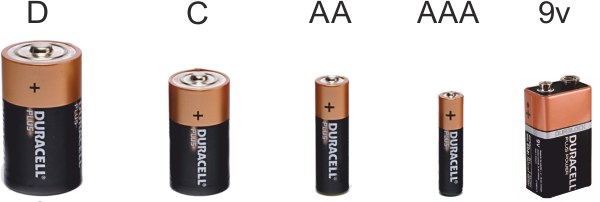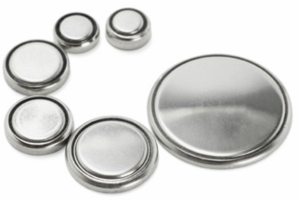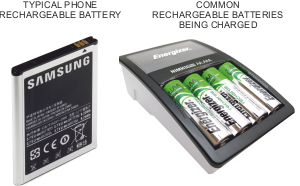AND WIND-UP DEVICES



RECHARGEABLE BATTERIES
Rechargeable batteries are common in lots of electronic devices, ranging from phones to radios and torches. Modern rechargeable batteries can be recharged relatively quickly, unlike the early versions. They can also be recharged thousands of times, making them environmentally friendly compared to alkaline batteries.